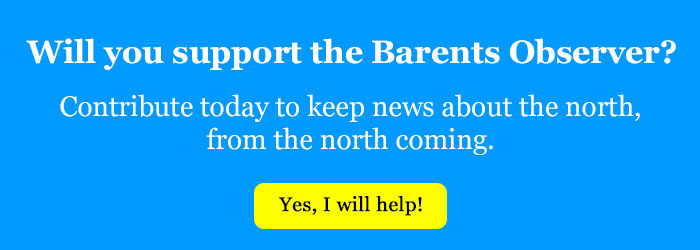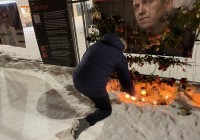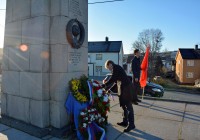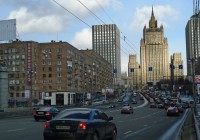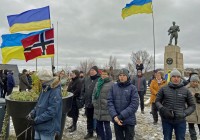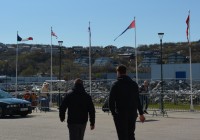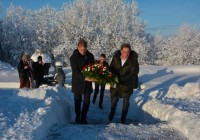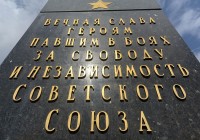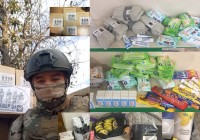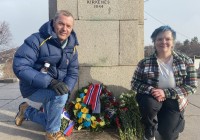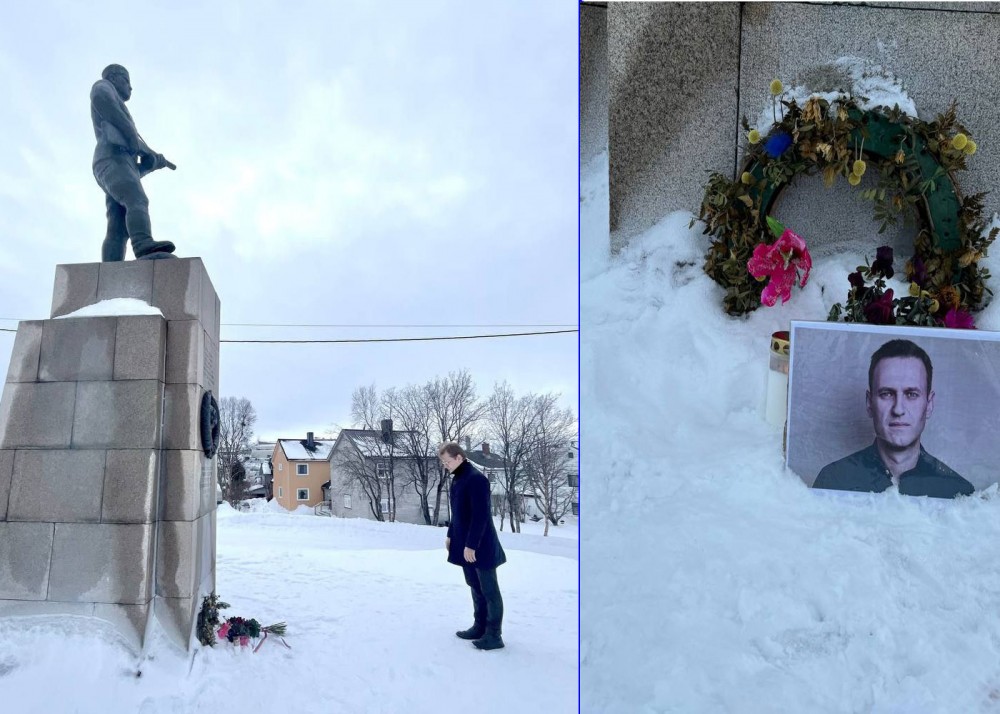
Russia's diplomats in Kirkenes removed Navalny portrait before staging propaganda photo session
ADVERTISEMENT
Consul General Nikolai Konygin arrived with his team at the Second World War monument in the afternoon on Defender of the Fatherland Day, February 23.
The diplomat’s bouquet consisted of roses tied together with a ribbon in white, blue and red, the colors of the Russian flag.
On the photos posted on the Consulate General’s Telegram channel, the ceremonial part of the event at first sight looks all good.
A closer look at the three photos, however, reveals the shocking fact that the Russian diplomat or some of his staff had removed Navalny’s portrait.
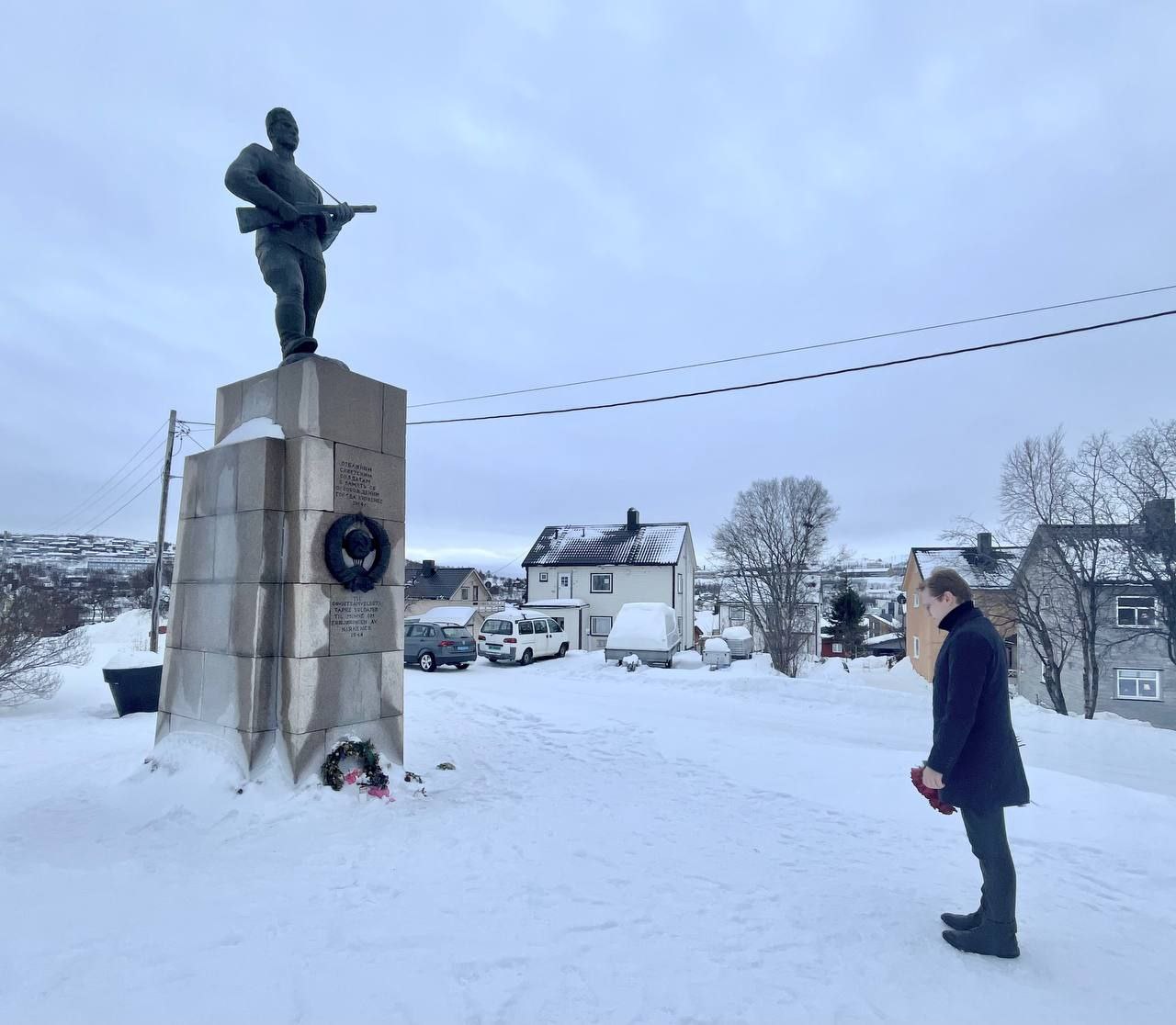
The Barents Observer has repeatedly tried to get a comment from the Consulate and Konygin, but phone calls remained unanswered, or cut off, all Friday.
When our reporters shortly before the arrival of the Russian diplomat visited the monument, the portrait of Navalny was there. Barents Observer was not present when the diplomats laid flowers and arranged the photo session.
ADVERTISEMENT
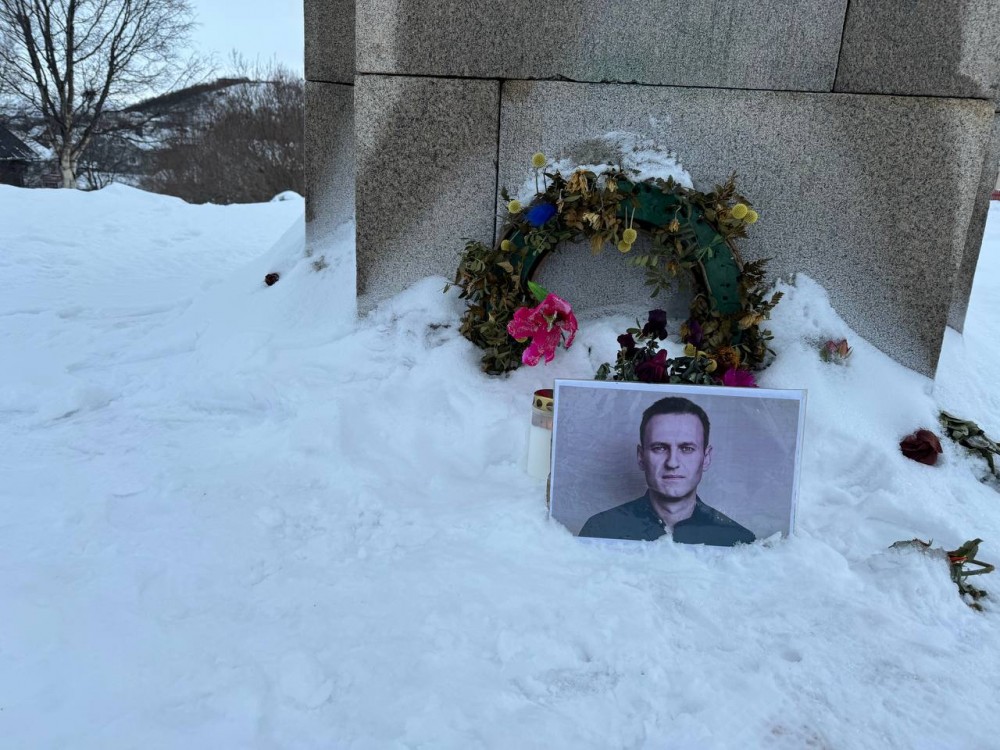
After the Consulate General held their ceremony, the Barents Observer again went to the memorial and could see that Navalny’s portrait was placed back again, but not in the same place.
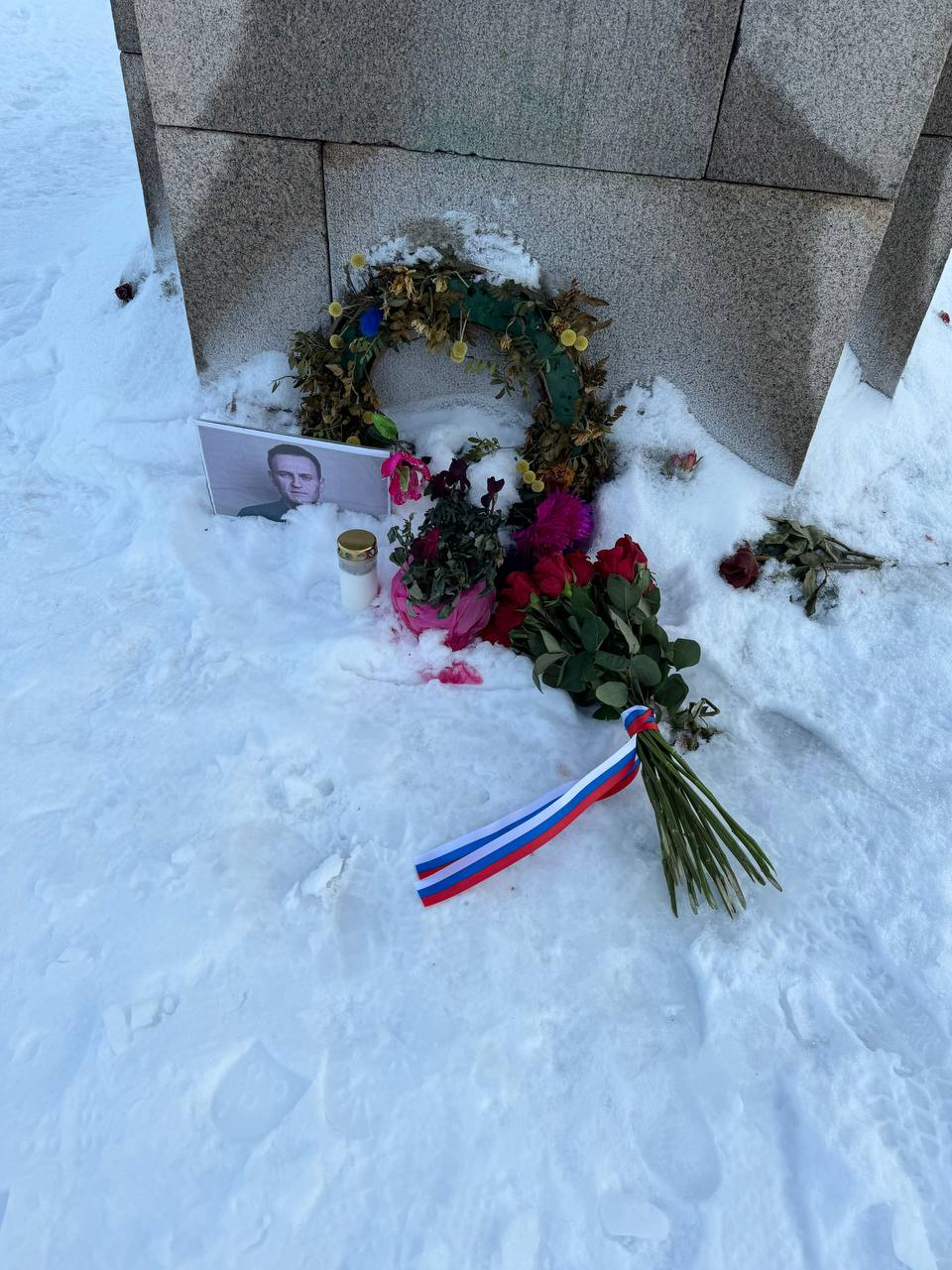
Russia’s war against Ukraine has strongly affected Norwegian-Russian relations in the small border town.
Over many years, official representatives of both Norway and Russia have assembled by the local war monument to commemorate fallen Soviet soldiers. In 2019, Sergei Lavrov laid wreaths together with Norway’s then-foreign minister Ine Eriksen Søreide.
Such joint ceremonies have come to a definite stop.
Last Friday, after the death of Aleksei Navalny was announced, locals in Kirkenes gathered in a silent memorial across the street from Russia’s Consulate General where candle lights and Navalny portraits were placed.
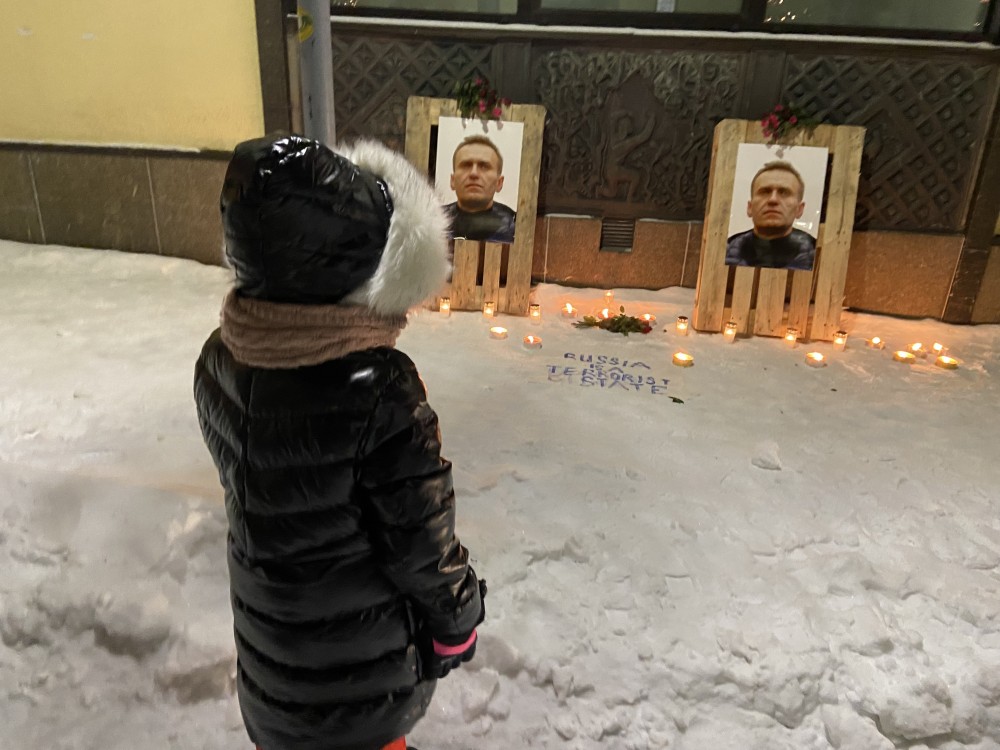
Propaganda
Joakim Aalmen Markussen, a postdoc at UiT The Arctic University of Norway is an expert on how Russia uses Second World War memorials in Norway as a means of propaganda.
“What happened in Kirkenes on Friday was another illustration of propaganda,” he says to the Barents Observer.
“Since 2014, the consulate general has commemorated important dates in Russian memory culture, including the Day of the Defenders of the Fatherland at WWII memorials in Northern Norway.”
Markussen explains that until the full-scale invasion of Ukraine two years ago, this policy aimed to create an impression that people in northernmost Norway, who were frequently invited and attended commemoration ceremonies with the Consul General, shared the key elements of the Russian WWII narrative, namely that of liberation and victory.
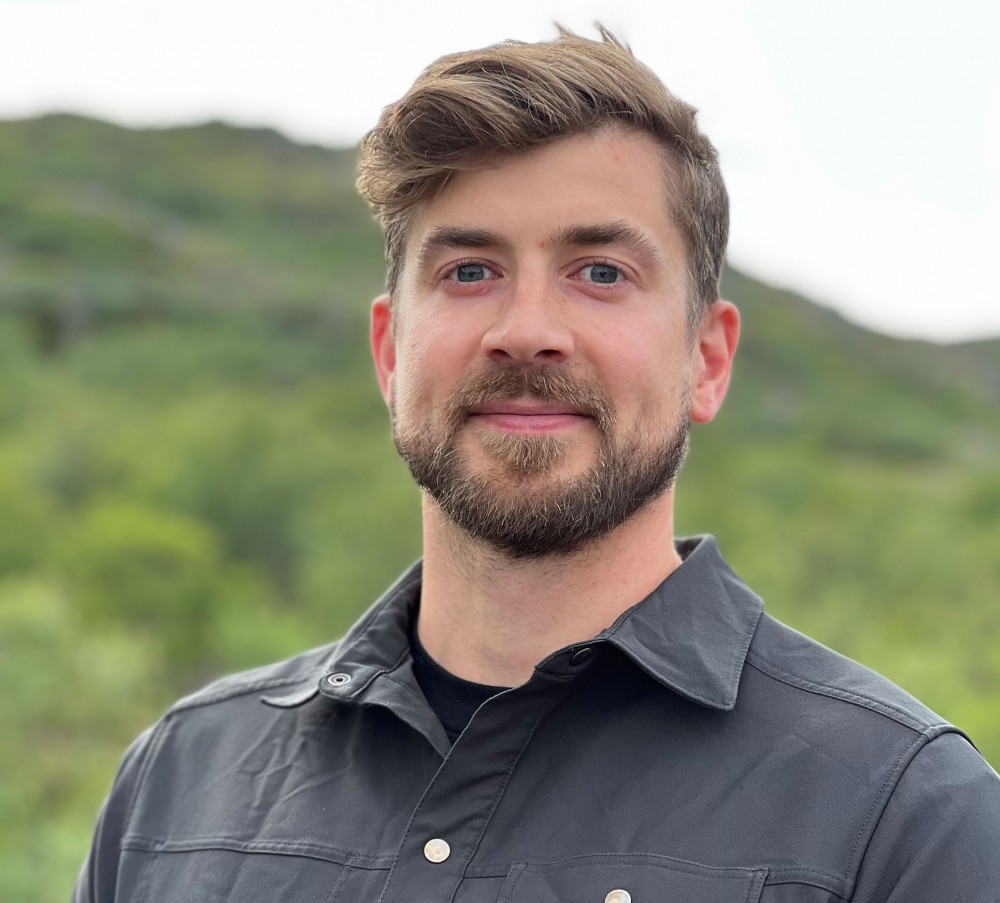
“By utilizing an increasing number of war memorials in Northern Norway since 2014 to propagate both the official liberation/victory narrative and the supposed shared Russian-Norwegian interest in commemorating this narrative, the Consul General has sought to enroll Norway - or, at the very least, the local communities in Northern Norway - as memory allies in Russia’s ongoing memory wars against countries in Eastern Europe,” Joakim Aalmen Markussen elaborates.
Over the last two years, he adds, there have been several examples indicating that Russia appears to have shifted its approach.
“It appears the Russian diplomats have changed from focusing on alliance-building to using memorials as platforms for provocations and more openly as channels for state-sponsored propaganda.”
“For instance, social media posts from the Russian embassy’s own ceremony in Oslo yesterday were surrounded by a stream of Kremlin propaganda about the events in Kyiv and Ukraine around these very same dates ten years ago. This clearly demonstrates the Kremlin’s linkage of the WWII narrative with its ongoing aggression in Ukraine,” Joakim Aalmen Markussen says.
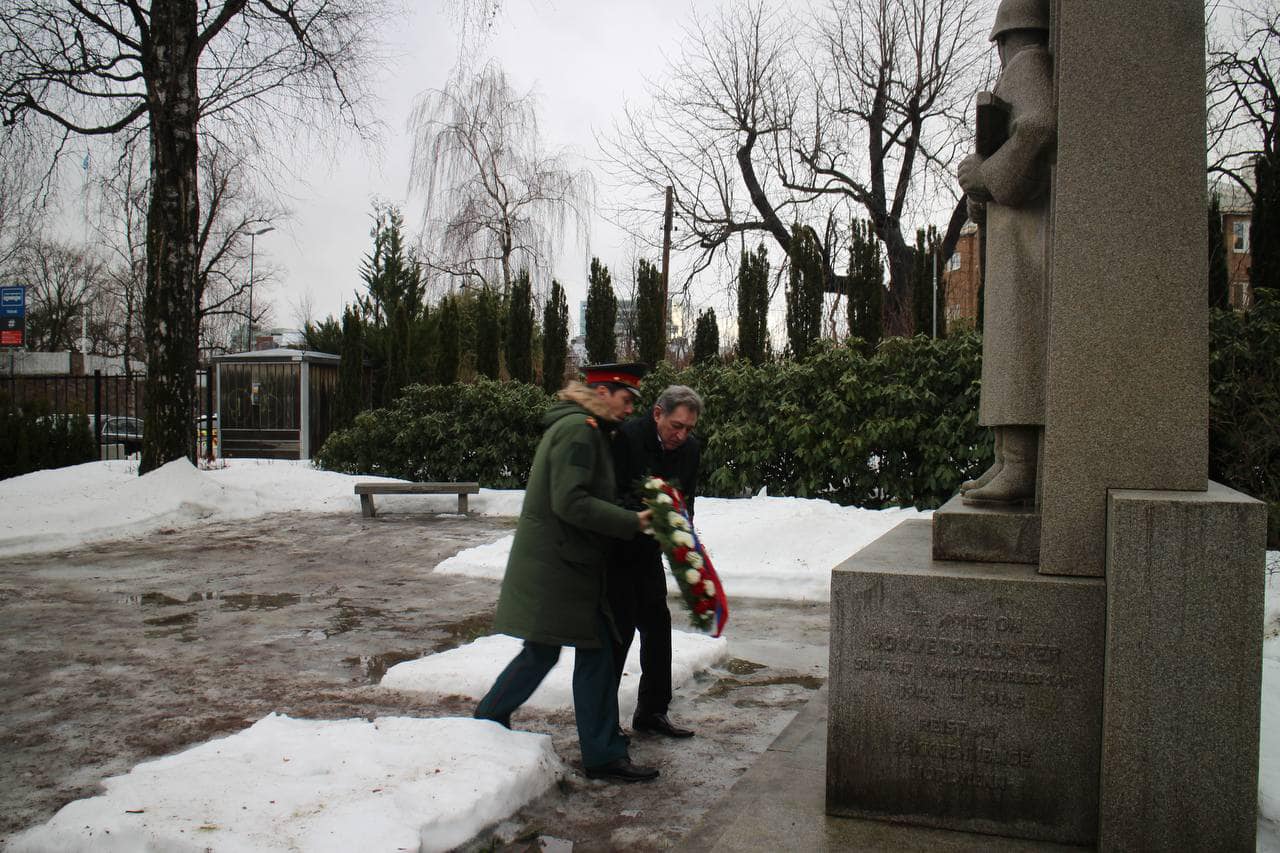
ADVERTISEMENT
The Barents Observer Newsletter
After confirming you're a real person, you can write your email below and we include you to the subscription list.



